Hey everybody, I felt like creating this post in order to express my feelings concerning Pablo Picasso's paintings by creating this list with his top 5 pieces of art.
These at my opinion can be used to sum up Pablo Picasso's way of communicating with the person that is admiring his exotic art!
-
5. Bather with Beach Ball, 1932
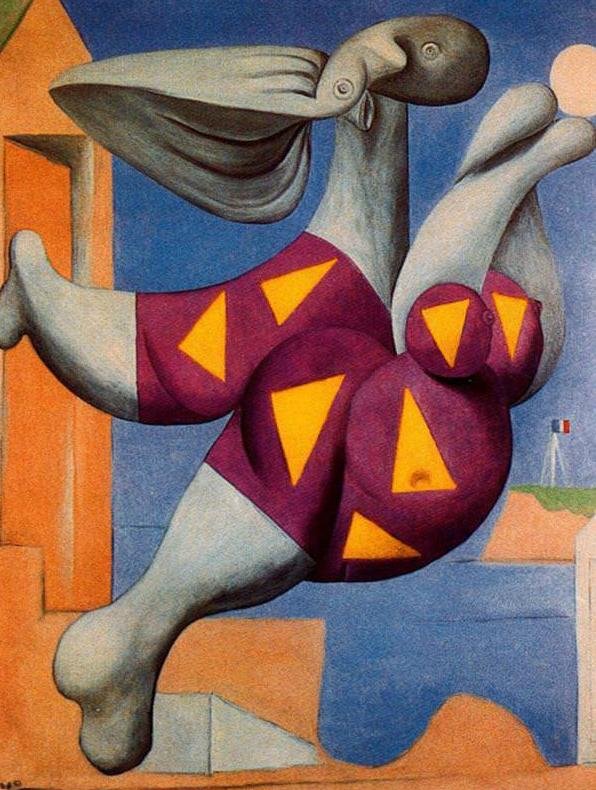
In this painting Picasso depicted his young mistress, Walter, as a pneumatic plaything, a floating zeppelin with a blow-up tube for her head. Although this is not the finest of Picasso's paintings of Walters, it was made special because of the tender effect: : a kind of low relief of soft forms fading into shadow that creates an evanescent image, a face seen in the half-light or as if through a scrim.
4. Bread and Fruit Dish on a Table, 1909
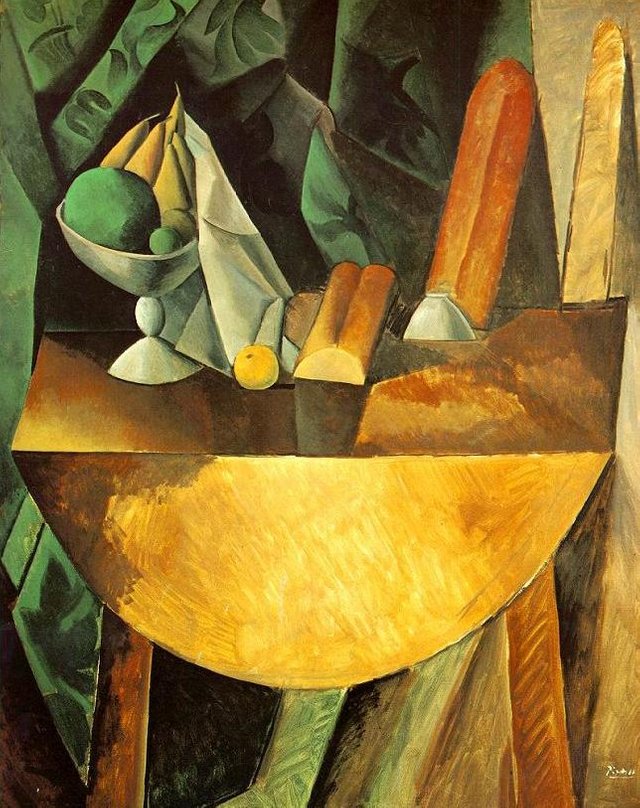
Bread and Fruit Dish on a Table, 1909 is the grandest of Picasso's works from the first winter of the new alliance and bears witness to his dialogue with Georges Braque. The canvas is an unusual size and shape for a still life and in fact Picasso adapted the composition from studies for one his own picture (known as Carnival at the Bistro) of costumed figures seated around a drop-leaf table - a change which involved eliminating all narrative and opting for the contemplative subject matter favoured by Braque.
3. Bullfight: Death of the Toreador, 1933
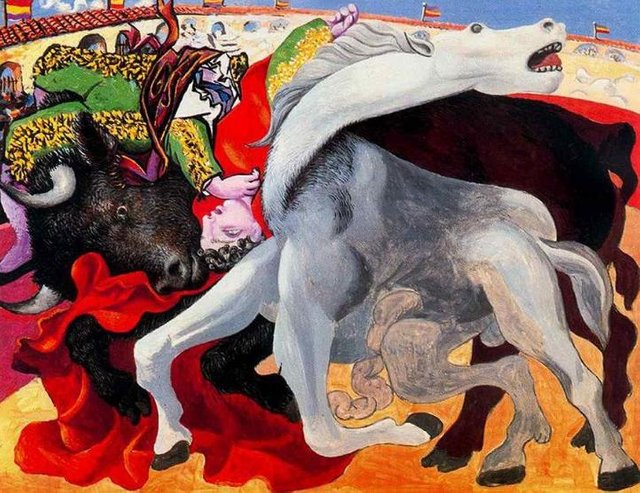
The central images of the panicking grey horse, with its heavy brushstrokes, acts as an imposing tonal contrast, in order to exaggerate the use of color that capture the moment of the bullfighter's death. We hardly notice that the butchered horse is dying because the entrails are grey in tone. The absence of gore from horse and man is taken up by the referent image of the red cape, which swirls in a bloody cloud between the bull and the fighter who fails, like his cloak, between the two beasts. Color creates a powerful sensation of crackling energy, violent movement and death.
Picasso's recent color experiments burst onto the canvas in full technicolour glory as he returns to his favorite them and personal passion: the bullfight. In later life he admitted that he often painted bullfights, traditionally held of Sundays, when unable to attend. This work was completed at Boisgeloup, the chateau 40 miles north-west of Paris, which Pacasso, now fabulously wealthy, bought in 1930.
2. Harlequin with Glass, 1905
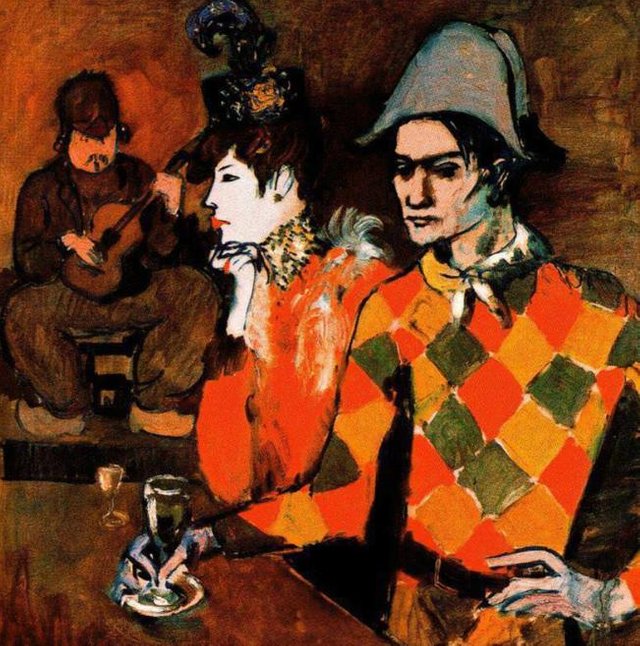
Harlequin with Glass was painted by Picasso in 1905. During this year Picasso's style underwent changes determined in part by personal reasons, yet at the same time reflecting rapid maturation of talent. Leaving behind the joyless world of the Blue Period - Picasso now arrived at the new colors that characterize At the Harlequin with Glass. He is no longer so pessimistic about life; for the first time he begins to celebrate it.
I feel that Picasso has come up a bit in the world - living with congenial fellow artists in Montmartre, and having met Fernande Olivier. Besides, the picture shows growing artistic maturity. The shrill colors which characterized Picasso's earliest works in Paris have gone, and with them his indebtedness to such models as Steinlen and Toulouse-Lautrec. The strong reds, yellows, and greens are clearly set off from the warm brownish background; the figures, flat and distinctly articulated, in turn articulate the space.
1. Guernica, 1937
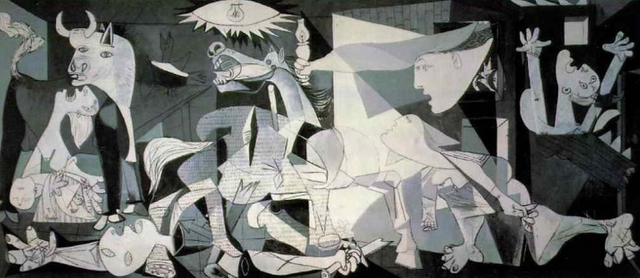
Guernica shows the tragedies of war and the suffering it inflicts upon individuals, particularly innocent civilians. This work has gained a monumental status, becoming a perpetual reminder of the tragedies of war, an anti-war symbol, and an embodiment of peace. On completion Guernica was displayed around the world in a brief tour, becoming famous and widely acclaimed. This tour helped bring the Spanish Civil War to the world's attention.
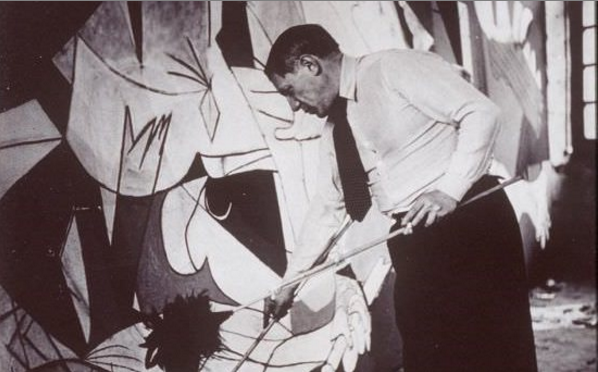
Photograph of Picasso painting Guernica in 1937
Some critics warn against trusting the polital message in Guernica. For instance the rampaging bull, a major motif of destruction here, has previouse figured, whether as a bull or Minotaur, as Picasso' ego. However, in this instance the bull probably represents the onslaught of Fascism. Picasso said it meant brutality and darkness, presumably reminiscent of his prophetic.
Consider leaving a like, it massively helps me expand my reviews and keep doing what I love!
My mom is a Picasso expert. I will link this to her and she will be the judge of the post!
Downvoting a post can decrease pending rewards and make it less visible. Common reasons:
Submit
That would be great , to have an art expert here.. Thanks @cob
Downvoting a post can decrease pending rewards and make it less visible. Common reasons:
Submit
Spamming tags, flagged.
Downvoting a post can decrease pending rewards and make it less visible. Common reasons:
Submit
Happy to see Guernica on the list. Awesome and profound piece of art. would love to see a review of goya as well. keep up the good work
Downvoting a post can decrease pending rewards and make it less visible. Common reasons:
Submit